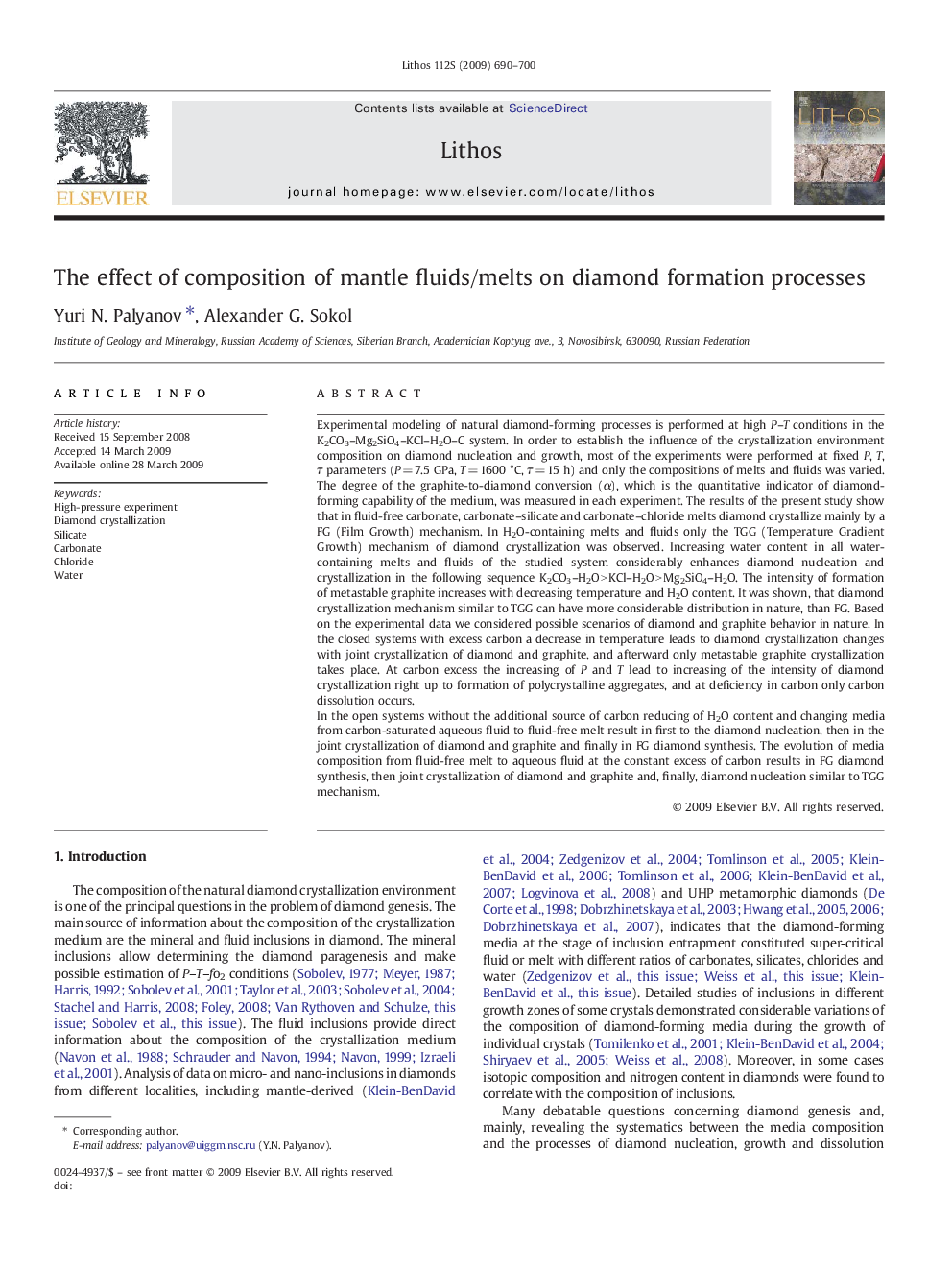| Article ID | Journal | Published Year | Pages | File Type |
|---|---|---|---|---|
| 4717181 | Lithos | 2009 | 11 Pages |
Experimental modeling of natural diamond-forming processes is performed at high P–T conditions in the K2CO3–Mg2SiO4–KCl–H2O–C system. In order to establish the influence of the crystallization environment composition on diamond nucleation and growth, most of the experiments were performed at fixed P, T, τ parameters (P = 7.5 GPa, T = 1600 °C, τ = 15 h) and only the compositions of melts and fluids was varied. The degree of the graphite-to-diamond conversion (α), which is the quantitative indicator of diamond-forming capability of the medium, was measured in each experiment. The results of the present study show that in fluid-free carbonate, carbonate–silicate and carbonate–chloride melts diamond crystallize mainly by a FG (Film Growth) mechanism. In H2O-containing melts and fluids only the TGG (Temperature Gradient Growth) mechanism of diamond crystallization was observed. Increasing water content in all water-containing melts and fluids of the studied system considerably enhances diamond nucleation and crystallization in the following sequence K2CO3–H2O > KCl–H2O > Mg2SiO4–H2O. The intensity of formation of metastable graphite increases with decreasing temperature and H2O content. It was shown, that diamond crystallization mechanism similar to TGG can have more considerable distribution in nature, than FG. Based on the experimental data we considered possible scenarios of diamond and graphite behavior in nature. In the closed systems with excess carbon a decrease in temperature leads to diamond crystallization changes with joint crystallization of diamond and graphite, and afterward only metastable graphite crystallization takes place. At carbon excess the increasing of P and T lead to increasing of the intensity of diamond crystallization right up to formation of polycrystalline aggregates, and at deficiency in carbon only carbon dissolution occurs.In the open systems without the additional source of carbon reducing of H2O content and changing media from carbon-saturated aqueous fluid to fluid-free melt result in first to the diamond nucleation, then in the joint crystallization of diamond and graphite and finally in FG diamond synthesis. The evolution of media composition from fluid-free melt to aqueous fluid at the constant excess of carbon results in FG diamond synthesis, then joint crystallization of diamond and graphite and, finally, diamond nucleation similar to TGG mechanism.
